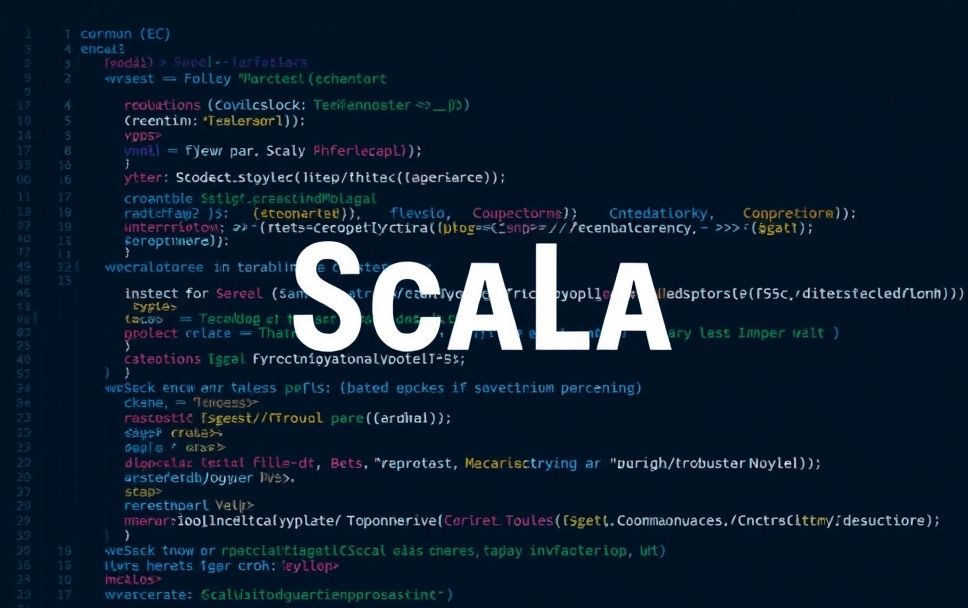What is a Scala Guide?
A Scala guide is a comprehensive resource designed to help programmers and developers navigate the intricacies of the Scala programming language. It encompasses fundamental concepts, advanced features, and practical applications, making it invaluable for both beginners and seasoned professionals.
Why is Scala Important in Modern Programming?
Scala, which stands for “scalable language,” combines object-oriented and functional programming paradigms. Its design allows developers to write concise, elegant code that is both powerful and expressive. Here are some reasons why Scala is crucial in today’s tech landscape:
- Versatility: Scala can be used for web development, data processing, and distributed computing.
- Compatibility: It runs on the Java Virtual Machine (JVM), making it interoperable with Java.
- Conciseness: Scala’s syntax is more concise compared to Java, reducing boilerplate code.
- Strong Community: A vibrant community supports Scala with numerous libraries and frameworks.
Key Concepts in Scala
Understanding Scala requires familiarity with several key concepts. Below are some foundational elements that are frequently covered in a Scala guide:
1. Functional Programming
Scala promotes functional programming, allowing functions to be first-class citizens. This means:
- Functions can be assigned to variables, passed as parameters, and returned from other functions.
- Immutable data structures are preferred, which can lead to safer and more predictable code.
For example, using a higher-order function in Scala can simplify complex operations:
val numbers = List(1, 2, 3, 4)
val doubled = numbers.map(_ * 2) // List(2, 4, 6, 8)2. Object-Oriented Programming
Scala fully supports object-oriented programming. It allows developers to define classes, create objects, and use inheritance:
- Classes can have both methods and fields, encapsulating behavior and data.
- Traits in Scala provide a way to define reusable components.
Here’s a simple example of a class in Scala:
class Animal(val name: String) {
def speak(): String = s"$name says hello"
}
val dog = new Animal("Dog")
dog.speak() // Output: Dog says hello3. Type Inference
Scala’s type inference allows the compiler to automatically determine the type of a variable, reducing the need for explicit type declarations:
val message = "Hello, Scala!" // The compiler infers the type as String4. Case Classes
Case classes in Scala are used for modeling immutable data:
- They automatically provide implementations for methods like equals, hashCode, and toString.
- They facilitate pattern matching, a powerful feature in Scala.
Example of a case class:
case class Point(x: Int, y: Int)
val p1 = Point(1, 2)
p1.copy(y = 5) // Point(1, 5)Practical Applications of Scala
Scala is widely used in various real-world applications. Here are some practical examples:
1. Web Development
Frameworks like Play and Akka provide robust solutions for building web applications in Scala. These frameworks enable:
- Asynchronous processing, which enhances performance.
- Reactive programming, allowing applications to react to changes in data.
2. Data Processing with Apache Spark
Scala is the primary language for Apache Spark, a powerful engine for large-scale data processing:
- Scala’s functional programming features make it ideal for processing large datasets.
- Developers can write concise and efficient data processing code.
For example, a simple Spark job in Scala might look like this:
val data = spark.read.textFile("data.txt")
val counts = data.flatMap(line => line.split(" ")).groupByKey(identity).count()3. Distributed Systems
Scala is used in building distributed systems thanks to its compatibility with Akka:
- Akka provides tools for building concurrent and distributed applications.
- It simplifies the complexity of managing state and communication between actors.
4. Machine Learning
Libraries like Breeze and Spark MLlib enable Scala developers to implement machine learning algorithms effectively:
- Scala’s strong typing and functional programming capabilities enhance the reliability of ML applications.
How to Use Scala in Your Daily Programming Tasks
Integrating Scala into your daily workflow can be straightforward. Here are some steps to get started:
- Set Up Your Environment: Install Scala via the Scala Build Tool (SBT) or use an IDE like IntelliJ IDEA with Scala plugin.
- Start Small: Begin with simple Scala scripts to familiarize yourself with the syntax and functionalities.
- Explore Libraries: Use libraries such as Akka for concurrency or Spark for data processing to enhance your applications.
- Practice Functional Programming: Implement functional programming principles in your code to improve its quality.
Related Concepts in Scala
Understanding Scala also involves familiarizing yourself with related concepts:
- Java: Since Scala runs on the JVM, knowledge of Java can help in understanding Scala’s interoperability.
- Functional Programming: A deeper grasp of functional programming paradigms can enhance your Scala skills.
- Reactive Programming: Concepts from reactive programming are essential for building responsive applications in Scala.
Conclusion: Embrace the Power of Scala
A well-structured Scala guide provides the tools and knowledge necessary to leverage the capabilities of this versatile programming language. Whether you are developing web applications, processing data, or building distributed systems, understanding Scala can significantly enhance your programming skills.
As you explore Scala, remember to practice consistently and apply what you learn to real-world projects. This hands-on experience will solidify your understanding and enable you to harness the full potential of Scala in your work.
So, are you ready to dive into the world of Scala and elevate your programming game?









